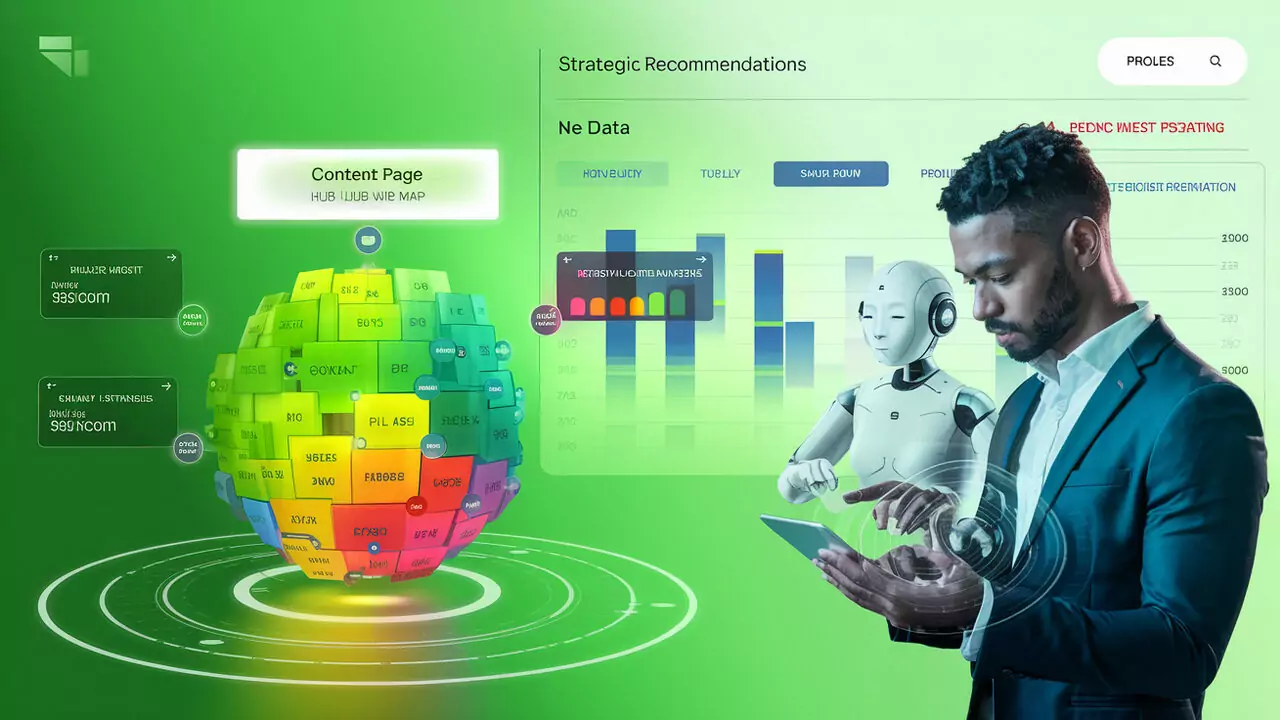
Analyzing Keyword Performance to Refine Your Hubs
Data-Driven Solutions for Inefficient Keyword Targeting
Learn to harness performance data to diagnose, adjust, and elevate your content hub strategy. In this article, we explore actionable insights and advanced methods for turning underperforming keywords into strategic assets.
What You’ll Learn
- How to diagnose keyword performance issues using solid analytics.
- Steps for continuous monitoring and systematic hub refinement.
- Bridging the gap between keyword strategy insights and measurable content outcomes.
- Actionable tactics to boost ROI through data-backed adjustments.
Problem Definition: Unclear Metrics and Underperforming Keywords
One of the most fundamental challenges in managing content hubs is the absence of clear performance monitoring. Without robust metrics, it’s difficult to gauge which keywords enhance your SEO and which are dragging your strategy down.
Ineffective measurement systems often leave you with weak data that fails to illustrate how keywords translate into tangible results. This gap in performance tracking can lead to misallocated resources and wasted marketing efforts.
For a deeper understanding of foundational strategies, Revisit the basics of keyword relevance and hub strategy for foundational understanding.
Impact Assessment: How Poor Analysis Affects SEO Performance
Poor keyword performance analysis can lead to suboptimal content strategies that maintain stagnant rankings. Without comprehensive analytics, you miss out on identifying trends that can improve user engagement and conversion rates.
This absence of actionable data often culminates in wasted resources, lower user engagement, and an overall decline in the efficacy of your digital marketing efforts.
For a broader perspective on bridging data and analysis, See how semantic search dovetails into a data-driven keyword analysis approach.
Solution Framework: Setting Up a Comprehensive Analysis Strategy
Begin by defining clear KPIs that truly reflect the impact of your keywords – metrics like click-through rates, organic traffic, and conversion rates provide actionable insights. When these KPIs are clearly established, you can more easily correlate keyword performance with real business outcomes.
The next step is to integrate robust analytics tools into your routine. Tools such as Google Analytics, SEMrush, and Ahrefs can continuously monitor performance, allowing you to fine-tune your strategy based on real-time data. Align these insights with your overall content hub objectives to create a feedback loop that drives continuous improvement.
Implementation Guide: Step-by-Step Data-Driven Optimization
Start with a robust audit of your current keyword performance. Use your analytics platforms to gather detailed data on each keyword’s impact. Knowledge of metrics such as CTR, search rankings, and traffic distribution is essential.
Next, integrate your tracking tools directly with your Content Management System (CMS) to streamline data collection. Schedule regular review sessions – weekly or monthly – to assess progress and adjust your strategy based on the latest insights.
For added perspective on integration techniques, Explore how seamless keyword integration into content further enhances performance.
Comparative Tables: Visualizing Keyword Performance Metrics
Visual tools can be especially powerful when explaining performance through numbers. Create tables that highlight essential metrics before and after you have implemented your new strategy. Comparative data not only makes progress clear, but it also provides a tangible case for ongoing strategy refinement.
| Metric | Before Optimization | After Optimization |
|---|---|---|
| Click-Through Rate (CTR) | ~1.5% | ~3.0% |
| Search Rankings | Positions 15-20 | Positions 5-10 |
| Organic Traffic | Low traffic volume | Significant increase |
| Conversion Rates | 2% conversion | 4% conversion |
This table offers a clear visualization of how data-driven changes bring noticeable improvements. Feel free to customize and input additional metrics that fit your specific needs.
Frequently Asked Questions
- Why is keyword performance analysis crucial?
- Keyword performance analysis provides actionable insights that fine-tune your strategies and help build more effective content hubs.
- What KPIs should be tracked?
- Essential KPIs include click-through rates, organic traffic, search rankings, and conversion metrics, which collectively indicate the health of your strategy.
- How does data guide hub refinement?
- Data pinpoints which keywords perform well and which need further adjustment, allowing for targeted refinements that improve overall hub performance.
- Which tools can assist in keyword performance analysis?
- Tools like Google Analytics, SEMrush, and Ahrefs offer comprehensive insights into how your keywords are performing.
- How do comparative tables benefit SEO strategies?
- Comparative tables visually display performance trends and metric improvements, making it easier to justify and understand your strategic decisions.
Recap
This article has walked you through identifying the challenges associated with unclear performance metrics, assessing their impact, and implementing a data-driven framework to redefine your keyword strategy. For quick navigation, review the key sections below:
Next Article section
If you found the insights in analyzing keyword performance valuable, imagine applying a similar data-driven approach to tackle niche topics with focused long-tail keywords. Our next piece, “Analyzing Keyword Performance to Refine Your Hubs,” continues the conversation on how to harness data for SEO success, offering actionable, real-world examples that make the complexity of keyword integration accessible and effective. Utilizing Long-Tail Keywords for Niche Hub Topics.
Join Our Community
Take the next step in refining your SEO strategy today – join our free ‘Fightback Traffic Systems‘ WhatsApp group. In our community, we dive deep into 26 unique traffic strategies, each discussed comprehensively in our webinar sessions. Get ready to see your content hubs come to life with real data and informed decisions.
